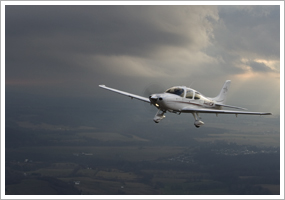| The following stories from the April 2, 2010, edition of AOPA ePilot were provided to AOPA members who expressed an interest in the particular subject areas. Any AOPA member can receive information tailored to their areas of interest by updating their preferences online. TRAINING TIPsUpdating weather How to do it depends on where you are and what you need. While airborne, dial in the nearest continuous Hazardous Inflight Weather Advisory Service (HIWAS) broadcast. HIWAS also will provide any urgent pilot reports (pireps). If your departure has been delayed, or you have arrived at your first destination and want to learn about any changes to the forecast, flight service offers a briefing designed for your needs, explains the “FSS Tip of the Week” in the June 13, 2008, AOPA ePilot Flight Training Edition : “Just ask for an abbreviated briefing, provide basic background information about your previous standard briefing, if applicable (and at what time you received it), and then request the information you want. Only requested items will be provided. For example, ‘I need an abbreviated briefing. I received a standard briefing for a flight in the Flagstaff area two hours ago. I just need the TAF for FLG and any new TFRs within 20 miles of the airport.’” You also may request this briefing by radio from Flight Watch while airborne. Remember that an abbreviated briefing only supplements your weather information. “Don't think of an abbreviated briefing as a shortcut to save time, however; you could miss important information. But, if a couple of hours have gone by since you received a standard briefing, an abbreviated briefing is a good way to see if anything has changed,” wrote meteorologist Jack Williams in “The Weather Briefing,” available for download from Flight Training Online. Whether you are waiting impatiently on the ground for fog to lift at your destination or checking surface winds at your base when returning home, keeping up with the trend will keep surprises to a minimum! TRAINING PRODUCTSWings Communications headsetsLooking for an inexpensive headset that offers good value for the money? Try Wings Communications’ line of passive noise reduction models, including the foldable WCH780, which retails for $220, and the conventional WCH950W, a bargain at $212.
Note: Products listed have not been evaluated by ePilot editors unless otherwise noted. AOPA assumes no responsibility for products or services listed or for claims or actions by manufacturers or vendors. FINAL EXAMQuestion: What is wake turbulence and why should I avoid it? Answer: Wake turbulence is a disturbance in the form of counter-rotating vortices aircraft generate from their wing tips. These vortices are created when the wings generate lift causing a pressure differential between the upper and lower wing surfaces. This pressure differential creates a swirling airflow aft of the wing tips which trail downstream from the aircraft. Their strength is determined by the weight, speed, and shape of the wing of the aircraft involved. The most intense wake turbulence is encountered behind an aircraft that is heavy, clean (gear retracted and/or flaps retracted), and slow. Some wingtip vortices can attain rotational speeds in excess of 300 feet per second. One of the greatest dangers of encountering these phenomena is induced roll that can exceed the roll authority of the aircraft. For more information on wake turbulence see Aeronautical Information Manual chapter 7-3-1. Also, read “The Weather Never Sleeps: Wake Vortices” on Flight Training Online. Got a question for our technical services staff? E-mail [email protected] or call the Pilot Information Center, 800/872-2672. Don’t forget the online archive of “Final Exam” questions and answers, searchable by keyword or topic. |
 “When should I update my weather briefing?” Many student pilots ponder this excellent question when planning a solo cross-country flight or while en route. The short answer is, “As often as possible.” Another guideline is to update your weather any time your information seems stale. If special weather reports were included in your briefing, that’s a clue to stay tuned. If conditions you are observing don’t meet expectations, get busy and find out why.
“When should I update my weather briefing?” Many student pilots ponder this excellent question when planning a solo cross-country flight or while en route. The short answer is, “As often as possible.” Another guideline is to update your weather any time your information seems stale. If special weather reports were included in your briefing, that’s a clue to stay tuned. If conditions you are observing don’t meet expectations, get busy and find out why.

